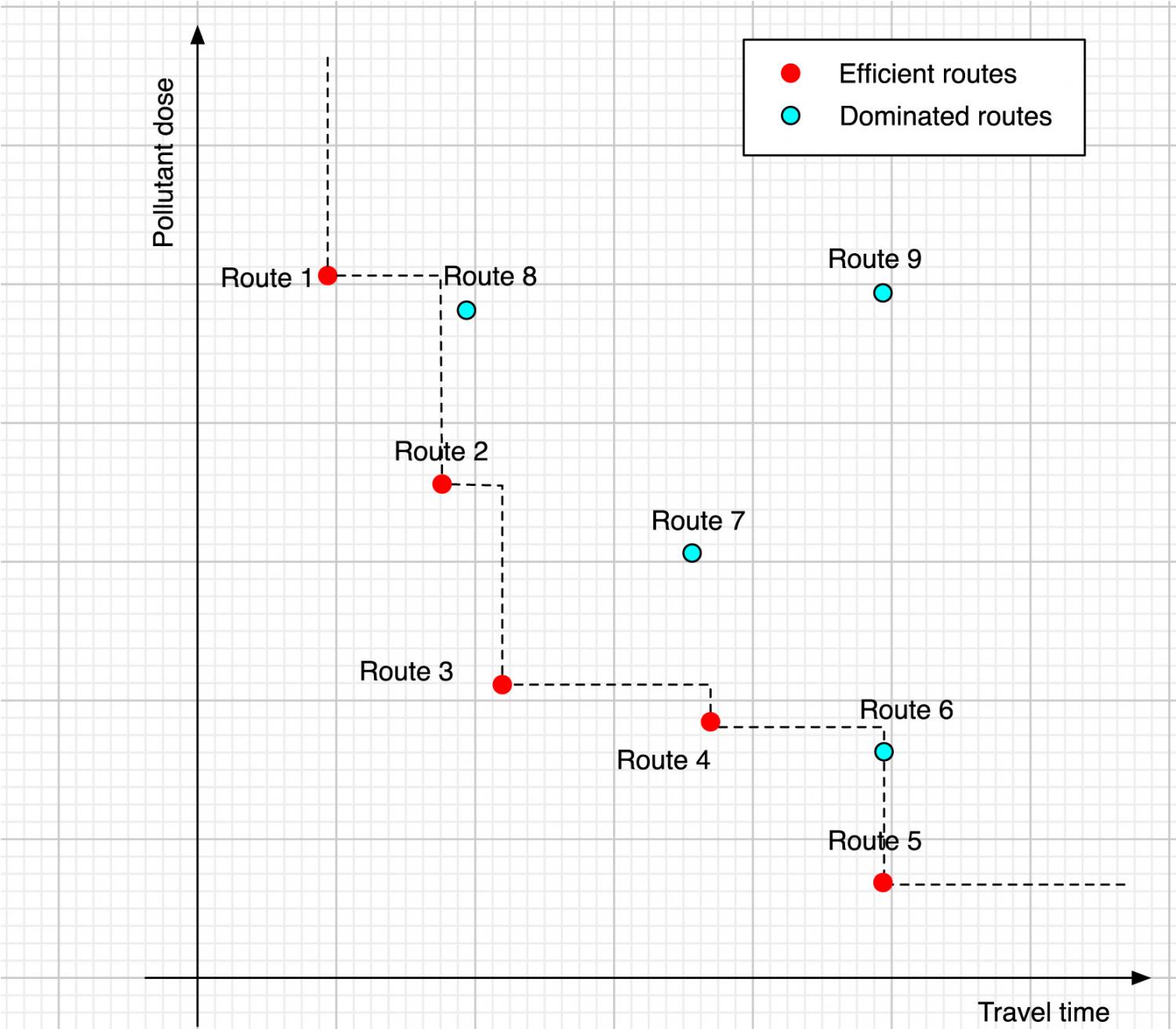
Elsevier, Operations Research for Health Care, Volume 19, December 2018
Cyclists form the most vulnerable road user group in terms of injury from traffic accidents, as well as exposure to traffic-related air pollution. Ironically, commuter cyclists are often motivated by improvement in health and fitness. Cycleways away from traffic with lower concentrations of pollutants from motorised vehicles sometimes result in longer distances and hence require longer travel times, while alternative routes sharing the road with other traffic, sometimes with buses, might result in exposure to higher pollutant concentrations. To help commuter cyclists achieve their objectives of getting to work in the shortest possible time and maximising their health benefits, we propose a bi-objective route choice model, with the minimisation of travel time and pollutant dose as the two objectives. A transport network information database is first constructed with comprehensive information on link type, lane width, gradient, link average speed, traffic volume, etc. such that both the travel time and the pollutant dose can be estimated at a reasonable level of accuracy. In particular, the pollutant dose will be dependent on the exercise level as well as the concentration of pollutants. Given an origin and a destination, to be provided by a cyclist, we apply a bi-objective shortest-path algorithm to determine an efficient set of routes such that neither the total travel time nor the total pollutant dose can be reduced without worsening the other. Profiles of this route choice set in terms of other useful information, such as elevation, and pollutant concentrations along the route can also be provided. With our model, cyclists can more easily trade off between commute time and pollutant dose. In cities with hilly terrain, such as in Auckland, New Zealand, such information can be expected to be extremely valuable for current and potential cyclists.
